CLASSIFICATION
1. Introduction
1.1 The Central Excise duty (CENVAT) is chargeable at the rates specified in the schedule to the Central Excise Tariff Act, 1985. The said schedule is divided into 20 sections and 96 Chapters. There are no Chapters with numbers 1,6,10,12 and 77. As such effectively there are 91 Chapters. Each Chapter is further divided into headings and sub-headings. In order to determine the applicable rate of duty in respect of a particular item, the positioning of that item under a particular head or sub-head is essential. The positioning of an item in the appropriate heading/sub-heading is called classification. The classification of an item is generally decided as per the commercial or trade parlance. However a deviation from this principle is made when the trade meaning or commercial nomenclature does not fit into the scheme of the statute.
2. Interpretative Rules for classification.
2.1 The Central Excise Tariff Act, 1985 incorporates five Rules of interpretation, which together provide necessary guidelines for classification of various products under the schedule. As regards the Interpretative Rules, the classification is to be first tested in the light of Rule 1. Only when it is not possible to resolve the issue by applying this Rule, recourse is taken to Rules 2,3 & 4 in seriatim. The provision of the individual Rule is as follows:
`Rule 1 declares that Section & Chapter titles are for ease of reference only. For legal purposes, the classification of goods are to be determined according to the terms of the headings and relevant Section or Chapter Notes. Assistance from subsequent provisions of the Interpretative Rules are to be sought only if the Section or Chapter notes do not otherwise require.
Rule 2(a):-This rule provides for classification of an article referred to in a heading, even if that article is incomplete or unfinished, or is presented in an unassembled or disassembled form. An important condition to be satisfied for classification in this manner is that in its incomplete or unfinished state, the article has the essential character of the complete of finished article. Some of the important aspects which are relevant in this regard are functional aspect, physical aspect and the degree of completion of the product.
Rule2(b):-This rule relates to mixture or combination of materials or substances, and goods consisting of two or more materials or substances. According to this rule headings in which there is a reference to materiel or substance also apply to that material or substance mixed or combined with other materials or substances. This rule does not apply where specific provisions exist in the headings or the sections or chapter notes excluding such classification.
Rule 3 : This rule lays down three steps for classifying the goods which are, prima facie, classifiable under several headings including mixtures or combinations. The sequential order of the steps contemplated are –
(a) most specific description;
(b) essential character; and
(c) heading which occurs last in numerical order;
This rule applies when goods are prima facie classifiable under two or more headings.
In the first step, {Rule 3(a)) the general guidelines are that a description by name is more specific than the description by character and a description which identifies the goods clearly and precisely is more specific than the one which is less complete.
The second step [Rule 3 (b)1 relates only to mixtures, composite goods consisting of different materials or components and goods put up in sets. This rule finds applicability if rule 3(a) does not help. In all such cases the goods are to be classified as if they consist of material or component which gives them their essential character.
When goods cannot be classified with reference to Rules 3(a) and 3(b), they are to be classified in terms of Rule 3(c)- in the heading which occurs last in numerical order among those which equally merit consideration. This is a fall back provision for resolving the matter when no heading can be regarded as providing a more specific description than the others and when it is not possible to identify the material or component which gives the concerned goods their essential character.
Rule-4:-When goods cannot be classified in accordance with rules 1,2, & 3, then they are to be classified in a heading of a product, which is most akin to the goods in question. Kinship can, of course, depend on many factors such as description, character, purpose etc.
Rule-5:-This rule postulates that the classification of any product under a sub-heading is to be contemplated after the product concerned has been properly classified under its proper four digit Chapter heading. The classification in the sub-heading of a heading is determined mutatis mutandis in accordance with the principles applicable to classification in the four digit headings.
3. Powers of the C.B.E.C. to issue orders of classification of goods.
3.1 Section 37B of the Central Excise Act, 1944 empowers the Central Board of Excise & Customs to issue orders, instructions and directions, for the purpose of uniformity in the classification of goods or with respect to the levy of excise duties on such goods.
VALUATION
1. Value under the Central Excise Act, 1944
1.1 Value of the excisable goods has to be necessarily determined when the rate of duty is on ad-valorem basis. Accordingly, tinder the -Central Excise Act, 1944 the following values are relevant for assessment of duty. Transaction value is the most commonly adopted method.
(i) Transaction value under Section 4.
(ii) Value determined on basis of maximum Retail Sale Price as per Section 4A, if applicable to a given commodity.
(iii) Tariff value under Section 3, if applicable.
2. Transaction Value
2.1 Section 4 of the Central Excise Act, as substituted by section 94 of the Finance Act, 2000 (No.10 of 2000),came into force from the 1st day of July, 2000. This section contains the provision for determining the Transaction value of the goods for purpose of assessment of duty.
2.2 For applicability of transaction value in a given case, for assessment purposes, certain essential requirements should be satisfied. If any one of the said requirements is not satisfied, then the transaction value shall not be the assessable value and value in such case has to be arrived at under the valuation rules notified for the purpose. The essential conditions for application of a Transaction value are:
(i) The goods are sold by an assessee for delivery at the time of place of removal. The term “place of removal” has been defined basically to mean a factory or a warehouse, and will include a depot, premises of a consignment agent or any other place or premises from where the excisable goods are to be sold after their clearances from the factory.
(ii) The assessee and the buyer of the goods are not related; and (iii) The price is the sole consideration for the sale.
2.3. The system of valuation, that was prevalent before 1.7.2000 was essentially based on the concept of ‘Normal Wholesale Price, even though sales were effected at varying prices to different buyers or class of buyers from factory gate or Depots etc. The new Sec.4 introduced with effect from 1.7.2000 makes a fundamental departure from this system.
2.4 The new section 4 essentially seeks to accept different transaction values which may be charged by the assessee to different customers, for assessment purposes so long as these are based upon purely commercial consideration where buyer and the seller have no relationship and price is the sole consideration for sale. Thus, it enables valuation of goods for excise purposes on value charged as per commercial practices rather than looking for a notionally determined value.
2.5 Transaction value would include any amount which is paid or payable by the buyer to or on behalf of the assessee, on account of the factum of sale of goods. In other words, if, for example, an assessee recovers advertising charges or publicity charges from his buyers, either at the time of sale of goods or even subsequently, the assessee cannot claim that such charges are not to be included in the transaction value. The law recognizes such payment to be part of the transaction value, that is assessable value for those particular transactions.
(1) As per the new Sec.4, transaction value shall include the following receipts / recoveries or charges, incurred or provided for in connection with the manufacturing, marketing, selling of the excisable goods:
(a) Advertising or publicity;
(b) Marketing and selling organization expenses;
(c) Storage;
(d) Outward handling;
(e) Servicing, warranty;
(f) Commission or
(g) Any other matter.
The above list is not exhaustive and whatever elements which enrich the value of the goods before their marketing and were held by Hon’ble Supreme Court to be includible in “value” under the erstwhile section 4 would continue to form part of section 4 value even under new section 4 definition.
(2) Thus if in addition to the amount charged as price from the buyer, the assessee recovers any other amount by reason of sale or in connection with sale, then such amount shall also form part of the transaction value. Where the assessee includes all their costs incurred in relation to manufacture and marketing while fixing price payable for the goods and bills and collects an all inclusive price –as happens in most cases where sales are to independent customers on commercial consideration – the transaction price will generally be the assessable value. However, where the amount charged by an assessee does not reflect the true intrinsic value of goods marketed and total value split up into various elements like special packing charges, warranty charges, service charges etc. it has to be ensured that duty is paid on correct value. The following guidelines in this regard with reference to various receipts / recoveries in connection with the sale are issued:
(i) Packing charges:
Packing charges shall form part of the assessable value as it is a charge in connection with production and sale of the goods, recovered from the buyer. Under the erstwhile Sec.4, inclusion of cost of packing in the value was related to the nature of packing such as primary or secondary etc. Such issues are not relevant in the new SeT.4 and any charges recovered for packing, whether ordinary or special is includible in the transaction value if the same is not included in the price of the goods.
In the case of reusable containers (glass bottles, crates etc.), normally the cost is amortized and included in the cost of the product itself. Therefore, the same is not required to be included in the value of the product unless it is found that the cost of reusable container has not been amortised and included in the value of the product.
However, rental charges or cost of maintenance of reusable metal containers like gas cylinders etc. are to be included in the value since the amount has been charged by reason of, or in connection with the sale of goods.
Similarly, cost of containers supplied by the buyer will be included in the transaction value of the goods, as the price will not be the sole consideration of the sale and the valuation would be governed by Rule 6 of the Valuation Rules, 2000.
(ii) Warranty charges will form part of the transaction value irrespective of whether the warranty is optional or mandatory.
(iii) Interest for delayed payments is a normal practice in industry. Interest under a financing arrangement entered between the assessee and the buyer relating to the purchase of excisable goods shall not be regarded as part of the assessable value provided that:
(a) the interest charges are clearly distinguished from the price actually paid or payable for the goods;
(b) the financing arrangement is made in writing; and
(c) where required, assessee demonstrates that such goods are actually sold at the price declared as the price actually paid or payable.
(iv) Discount of any type or description given on any normal price payable for any transaction will not form part of the transaction value for the goods, e.g. quantity discount for goods purchased or cash discount for the prompt payment etc. will therefore not form part of the transaction value: However. it is important to establish that the discount has actually been passed on to the buyer of the goods. The differential discounts extended as per commercial considerations on different transactions to unrelated buyers if extended is also permissible and different actual prices paid or payable for various transactions are to be accepted. Where the assessee claims that the discount of any description for a transaction is not readily known but would be known only subsequently – as for example, year end discount – the assessment for such transactions may be made on a provisional basis. However, the assessee has to disclose the intention of allowing such discount to the department and make a request for provisional assessment.
(v) Taxes and duties:
The definition of transaction value mentions that whatever amount is actually paid or actually payable to the Government or the relevant statutory authority by way of excise, sales tax and other taxes, such amount shall be excluded from the transaction value. If any excise duty or other tax is paid at a concessional rate for a particular transaction, the amount of excise duty or tax actually paid at the concessional rate shall only be allowed to be deducted from price.
As per Board’s Circular No.2/94-CX.1 dt.11.1.94 (F.No.6/20/94- CX.1) the sales tax set-off available in respect of inputs is to be ignored while computing the sales tax payable. The Circular dt.11th Jan.1994 was based on the definition of ‘duty of excise payable’ given in Explanation to the erstwhile Sec.4(4)(d)(ii). The new sec.4 does not incorporate any such Explanation. The “transaction value” will exclude the sales tax actually paid or payable on the goods.. Thus, for example, if the effective sales tax on cum-duty price of Rs.100 is 4% and the assessee is eligible for set-off of sales tax of, say, Rs.10 paid/suffered on the inputs, the actual sales tax paid/payable would be Rs.40-10 = Rs.30 and this will be the amount permissible as deduction from the “transaction value” and not Rs.40/-.
State Governments permit deferment of payment of Sales tax for particular period as an incentive. Sales tax is deductible from the wholesale price for determination of assessable value for levy of Central Excise duty even though it may not be deposited immediately with the State Government. Where sales tax is so retained by the assessee, the interest on the money retained, need not be treated as additional consideration in terms of Rule 6 of Central Excise (Valuation) Rules, 2000. As per Rule 5 of the earlier Valuation Rules, 1975 & Rule 6 of Central Excise Valuation {Determination of price of Excisable goods) Rules, 2000, “Additional consideration” should flow directly or indirectly from the buyer to the seller. Therefore interest earned, on deferred sales tax by the manufacturer is not a benefit extended by the buyer to the seller but is an incentive, accruing in pursuance of State Government policy and hence cannot be treated as “additional consideration” under the Central Excise Valuation Rules. (Circular No 679/70 /2002-CX 4th December, 2002
The total amount received by a manufacturer will be deemed to be the, price-cum-duty and the assessable value should be determined accordingly subject to exclusion of sales tax or other taxes. Similar will be the position when additional considerations are received. (Finance Act, 2003)
(vi) Erection, installation and commissioning charges:
If the final product is not excisable, the question of including these charges in the assessable value of the product does not arise. As for example, since a Steel Plant, as a whole, is an immovable property and therefore not excisable, no duty would be payable on the cost of erection, installation and commissioning of the steel plant. Similarly, if a machine is cleared from a factory on payment of appropriate duty and later on taken to the premises of the buyer for installation/erection and commissioning into an immovable property, no further duty would be payable. On the other hand if parts/components of a generator are brought to a site and the generator erected/installed and commissioned at the site then, the generator being an excisable commodity, the cost of erection, installation and commissioning charges would be included in its assessable value. In other words if the expenditure on erection, installation and commissioning has been incurred to bring into existence any excisable goods, these charges would be included in the assessable value of the goods. If these costs are incurred to bring into existence some immovable property, they will not be included in the assessable value of such resultant property.[Refer Board’s 37B Order No 58/1/2002 – CX dt 15.1.2002]
2.6 Prior to Budget 2003, the term “place of removal” was defined in the same manner as was defined in the erstwhile section 4 prior to its amendment in 1996 i.e. the factory or warehouse. The definition has since been amended to include the depot, premises of consignment agent and any other place to which the goods are removed before sale. In this connection, the Board had issued an order under Sec. 378 (No. 59/1/2003-CX. Dated 3.3.2003) clarifying the position.
2.7 However, ‘time of removal’ in case of excisable goods removed from the place of removal is deemed to be the time of clearance of such goods from the ‘factory’. If, therefore, the assessable value is with reference to delivery at the ‘time and place of removal’, transaction value will be the assessable value.
3. Valuation Rules
3.1 In those cases where any of the three requirements mentioned in para 2 above is missing, (i.e. sale for delivery at the time and place of removal, assessee and buyer are not related and price is the sole consideration) the assessable value shall be determined on the basis of the Central Excise Valuation (Determination of Price of Excisable Goods) Rules, 2000 notified under Section 4(1)(b) by notification No. 45/2000-CE (NT), dated 30.6.2000.
3.2 Salient features of the new valuation rules are mentioned below:
(i) If the assessee and the buyer are not related persons and the price is also the sole consideration for sale but only the delivery of goods is made by the assessee at a place other than the factory/warehouse, the provisions of Rule 5 shall apply. In such cases, the assessable value shall be the “transaction value” without the addition of the cost of transportation from the place of removal (factory/warehouse/depot etc.) upto the place of delivery. For the period prior to 1.3.2003, exclusion of cost of transportation is allowed only for the actual cost of transportation and only if the assessee has shown the same separately in the invoice. After 1.3.2003, ‘cost of transportation’ includes
1. the actual cost of transportation; and
2. where freight is averaged, the cost of transportation calculated in accordance with generally accepted principles of costing.
Thus, ‘cost of transportation’ can be excluded even where freight is averaged and also there is no condition that the ‘cost of transportation’ should be shown separately in the invoice. However exclusion of the cost of transportation from the factory to the place of removal, where the factory is not th6 place of removal, shall not be permissible. The cost of transportation will include the cost of insurance also during the transportation of the goods.
(ii) If the goods are not sold at the factory gate or at the warehouse but they are transferred by the assessee to his depots or consignment agents or any other place for sale, the assessable value in such case for the goods cleared from factory/warehouse shall be the ‘normal transaction value’ of such goods at the depot, etc. at or about the same time on which the goods as being valued are removed from the factory or warehouse (Rule 7.L The expression “Normal transaction value” as defined in the valuation rules basically means the transaction value at which the greatest aggregate quantity of goods from the depots etc. are sold at or about the time of removal of the goods being cleared from the factory/warehouse. The time period for ascertaining the `normal transaction value’ o greatest aggregate quantity’ should be taken as the whole day and the transaction value of the “greatest aggregate quantity” would refer to the price at which the largest quantity of identical goods are sold on a particular day, irrespective of the number of buyers. lf, however, the identical goods are not sold by the assessee from depot/consignment agent’s place on the date of removal from the factory/warehouse, the nearest date on which such goods were sold or would be sold shall be taken into account. In either case ifthere -are series-of sales at or about the same time, the normal transaction value for sale to independent buyers will have to be determined and taken as basis for valuation of goods at the time of removal from factory/warehouse.
It follows from the Valuation Rules that in such categories of cases also if the price charged is with reference to delivery at a place other than the depot, etc. then the actual cost of transportation will not be taken to be a part of the transaction value and exclusion of such cost allowed on similar lines as discussed earlier, when sales are effected from factory gate/warehouse.
(iii) In cases where price is not the sole consideration for the sale, but the other requirements of clause (a) of sub-section (1) of section 4 of the Central Excise Act are satisfied, the value shall be determined in accordance with the provisions of Rule 6 of the valuation rules. This provides for adding to the transaction value the money value of any additional consideration flowing directly or indirectly from the buyer to the assessee. Such additional consideration would include the money value of goods and services provided free or at reduced cost by or on behalf of the buyer to the assessee. The ‘goods and services’ whose value is to be added to the value includes materials including packing materials, components, moulds, tools, dies, drawings, engineering, development, art work, plans and sketches etc.
However, where an assessee receives any advance payment from the buyer against delivery of any excisable goods, no notional interest on such advances will be added to value unless it is evidenced that the advance has influenced the fixation of sale price by way of charging a lesser price from or offering a special discount to the buyer who has made the advance deposit. An Explanation has been added in the rule from 1.3.2003 only to remove any doubts with respect to its scope.
Advertisement and publicity charges borne by the dealers/buyers are to be included in the assessable value. Even where the dealings are on principal to principal basis but .there is an agreement either written or oral that the buyer will incur certain expenditure for advertising the goods Of the assessee, the cost of such advertisement and publicity will be added to the price of the goods to determine the assessable value. In such cases since price would not be so/9, consideration for sale, the transaction value would be covecl3citft’ 6 of the Valuation Rules Court judgments delivered on this issue under the earlier Section 4, or the Rules made there under, will not apply w.e.f. 1.7.2000, in view of the definition of “transaction value”
However, where the brand name/copyright owner gets his goods manufactured from outside (on job-work or otherwise), the expenditure incurred by the brand name/copyright owner on advertisement and publicity ‘charges, in respect of the- said-goods, will not be added to the assessable value, as such expenditure is not incurred on behalf of the manufacturer (assessee). [Also refer Board’s Circular 619/10/2002 CX dt 19.2.2002] ]
After sales service and pre delivery inspection (PDI) charges
After sales service and pre delivery inspection (PDI) are services provided free by the dealer on behalf of the assessee and the cost towards this is included in the dealer’s margin (or reimbursed to him). This is one of the considerations for sale of the goods (motor vehicles, consumer items etc.) to the dealer and will therefore be governed by Rule 6 of the Valuation Rules on the same grounds as indicated in respect of Advertisement and Publicity charges. That is, in such cases the after sales service charges and PD1 charges will be included in the assessable value after 1.7.2000, as the judgements of the Apex Court to the contrary were issued in the context of the erstwhile Sec.4 and the Valuation Rules, 1975. The value of these charges are however not includible for transactions relating to the period before 1.7.2000. (Board’s Circular No.681/72/2002-CX dated 12.12.2002 & )
(iv)The value of goods which are consumed by the assessee or on his behalf in the manufacture of other articles will be on Cost construction method only (Rule 8). The assessable value of captively consumed goods will be taken at 110% (substituted by 60/2003 (N. T.) 5.10.2003 —prior to that it was 115%) of the cost of manufacture of goods even if identical or comparable goods are manufactured and sold by the same assessee as there have been disputes in adopting values of comparable goods. The concept of deemed profit for notional purposes has also been done away with and a margin of 10% by way of profit etc. is prescribed in the rule itself for ease of assessment of goods used for captive consumption. The cost of production of captively consumed goods will be done strictly in accordance with CAS- 4. Copies of CAS-4 may be obtained from the local Chapter of /CWAI. (Ruth: Circular No. 692/08/2003-CX. dated 13.2.2003).
Where goods are transferred to a sister unit or another unit of the same company valuation will be done as per the proviso to rule 9.
Valuation of Samples: Since the goods are not sold section 4(1)(a) will not apply and recourse will have to be taken to the Valuation Rules. No specific rule covers such a contingency. Except rule 8 all the other rules cover contingencies where sale is involved in some form or the other. Therefore, the residuary rule 11 will have to be adopted along with the spirit of rule 8. In other words, the assessable value would be 110% of the ‘cost of production or manufacture’ of the goods.
(v)Where goods are sold through related persons, the transaction value is not applicable and the assessable value shall be the value at which the-related-person- sells the goods (Rule 9). If-the related- person (foes not sell the goods but uses them in manufacture of other articles, the value shall be 110% of the cost of production. For the purposes of Rule 9, related person means:
1. relatives;
2. buyer is a relative and distributor of the assessee or sub-distributor of such distributor or
3. persons having interest, directly or indirectly, in the business of each other.
Similarly, where goods are sold through an inter-connected undertaking, the value at which the goods are sold by such inter-connected undertaking shall be the assessable value (Rule 10). However, for such valuation the inter-connected undertaking should also be related in any of the manner described above (Rule 9). If such relationship is absent, ‘Transaction value’ shall be the basis of valuation for sales through inter-connected undertakings
For the purposes of valuation, ‘inter-connected undertakings’ shall have the meaning assigned to it in clause (g) of Sec.2 of the `Monopolies & Restrictive Trade Practices Act, 1969′ and ‘relative’ shall have the meaning assigned to in clause (41) of Sec.2 of the Companies Act, 1956. The relevant extracts of the two Acts are reproduced herein :
As per Monopolies & Restrictive Trade Practices Act, 1969 (Extracts) the “Inter-connected undertakings” means two or more undertakings which are inter-connected with each other in any of the following manner, namely :-
(i) if one owns or controls the other;
(ii) where the undertakings are owned by firms, if such firms have one or more common partners;
(iii) where the undertakings are owned by bodies corporate, –
(a) if one body corporate manages the other body corporate,
Or
(b) if one body corporate is a subsidiary of the other body corporate, or
(c) if the bodies corporate are under the same management, or
(d) if one body corporate exercises control over the other body corporate in any other manner;]
(iv) where one undertaking is owned by a body corporate and the other is owned by a firm, if one or more pal tners of the firm, –
(a) hold, directly or indirectly not less than fifty per cent of the shares, whether preference or equity, of the body corporate; or
(b) exercise control, directly, or indirectly, whether as director or otherwise, over the body corporate.
(v) one is owned by a body corporate and the other is owned by a firm having bodies corporate as its partners, if such bodies corporate are under the same management;
(vi)if the undertaking are owned or controlled by the same person of the same group;
(vii)if one is connected with the other either directly or through any number of undertakings which are inter-connected undertakings within the meaning of one or more of the forgoing sub-clauses.
Explanation I.- For the purpose of this Act, two bodies corporate shall be deemed to be under the same management, –
(i) if one such body corporate exercises control over the other or both are under the control of the same group or any of the constituents of the same group ; or
(ii) if the managing director or manger of one such body corporate is there managing director or manager of the other; or
(iii) if one such body corporate holds not less than one-third of the equity shares in the other or controls the composition of not less than one-third of the total membership of the board of directors of the other; or
(iv) if one or more directors or one such body corporate constitute, or at any time within a period of six months immediately preceding the day when the question arises as to whether such bodies corporate are under the same management constituted, whether independently or together with relatives of such directors of the employees of the first mentioned body corporate one fourth of the directors of the other; or
(v) if the same individual or individuals belonging to a group, while holding, whether by themselves or together with their relatives not less than one fourth of the equit, shares in one such body corporate also hold, whether by themselves oar together with their relatives not less than, one-fourth of the equity shares in the other ;
(vi) if the same body corporate or bodies corporate belonging to a group holding, whether independently or along with its or their subsidiary or not less than one-fourth of the equity shares in one body corporate, also hold not less than, one fourth of the equity shares in the other; or
{vii) if -not tess-ttian-, one-fourth of the total voting power in relation to each of the two bodies corporate is exercised or controlled by the same individual whether independently or together with his relatives or the same body corporate, whether independently or together with its subsidiaries; or
(viii) if not less than one-fourth of the total voting power in relation to each of the two bodies corporate is exercised or controlled by the same individuals belonging to a group or by the same bodies corporate belonging to a group, or jointly by such individual or individuals and one or more of such bodies corporate; or
(ix) if the directors of the one such body corporate are accustomed to act in accordance with the directions or instructions of one or more of the directors of the other or if the directors of both the bodies corporate are accustomed to act in accordance with the directions or instructions of an individual, whether belonging to a group or not.
Explanation II. – If a group exercises control over a body corporate, that body corporate and every other body corporate, which is constituent of, or controlled by, the group shall be deemed to be under the same management.
Explanation III. – If two or more bodies corporate under the same management hold, in the aggregate, not less than one-fourth equity share capital in any other body corporate, such other body corporate shall be deemed to be under the same management as the first-mentioned bodies corporate.
Explanation IV. – In determining whether or not two or more bodies corporate are under the same management, the shares held by financial institutions in such bodies corporate shall not be taken into account.
Illustration
Undertaking B is inter-connected with undertaking A and undertaking C is inter-connected with undertaking B. Undertaking C is inter-connected with undertaking A; if undertaking D is inter-connected with undertaking C, undertaking D will be inter-connected with undertaking B and consequently with undertaking A; and so on.
As per Companies Act, 196 (Extracts [Act No, 1 of 19561 the Meaning of “relative”.- A person shall be deer led to be a relative of other if, and only if, –
(a) they are members of a Hindu Undivided family; or
(b) they are husband and wife; or
( c) the one is related to the other in the manner as indicated in the following list.
List of Relatives
1. Father
2. Mother (including step-mother)
3. Sons (including step-son)
4. Son’s wife
5. Daughter (including step-daughter)
6. Father’s father
7. Father’s mother
8. Mother’s mother
10. Son’s son
9. Mother’s father
11. Son’s son’s wife
12. Son’s daughter
13. Son’s daughter’s husband
14. Daughter’s husband
15. Daughter’s son
16. Daughter’s son’s wife.
17. Daughter’s daughter
18. Daughter’s daughter’s husband
19. Brother
(including step-brother)
20. Brother’s wife
21. Sister (including step-sister)
22. Sister’s husband
Where goods are sold partly to related persons and partly to independent buyers, there is no specific rule covering such a contingency. Transaction value in respect of sales to unrelated buyers cannot be adopted for sales to related buyers since as per section 4(1) transaction value is to be determined for each removal. For sales to unrelated buyers valuation will be done as per section 4(1)(a) and for sale of the same goods to related buyers recourse will have to be taken to the residuary rule 11 read with rule 9 (or 10). Rule 9 cannot be applied in such cases directly since it covers only those cases where all the sales are to be related to buyers only.
3.3. Some important circulars issued on Valuation covering specific situations are reproduced for reference:
(i) Valuation of goods manufactured on lob-work basis: (Circular No.619/10/2002-CX 19th February, 2002)
Under the provisions of the earlier section 4 and the Rules made thereunder this matter has been finally decided by the Apex Court in the case of Ujagar Print Ltd41989(039)ELT0493(SCIand the case of Pawan Biscuits Co. Pvt Ltd [2000(120)ELT0024(SC)]. It was clearly held that liv-raspect of goods manufactured on job-work basis, assessable value would be the job charges (including the profit of the job-worker if not already included in the job-charges) plus the cost of the materials used in the manufacture of the item (including the cost of the materials supplied free of cost to the job-worker). The assessable value in such cases will not include the profit or the expenses (like advertisement and publicity, overheads etc) incurred by the buyer (or the supplier of the raw materials), where the dealing between the two are on principal to principal basis. The mere fact that the buyer is supplying some raw materials free of cost to the job-worker, will not be sufficient ground to contend that the dealings between the two are not at arms length. Goods manufactured on job-work were earlier assessed under the residuary Rule 7 of the erstwhile valuation Rules of 1975 read with rule 6(b) read with the Apex Court decisions referred to above.
Under the new valuation provisions, introduced with effect from 1.7.2000, there is no departure from the principles laid down by the Apex Court in the above two decisions, in respect of goods manufactured on job-work basis. In other words goods manufactured on job-work basis after 1.7.2000 will continue to be valued in the same manner as they were being valued before 1.7.2000. Since the buyer (raw-material supplier) supplies some items free of cost, price is not the sole consideration for the transaction between the copyright owner and the job-worker. Therefore, after 1.7.2000, in respect of goods manufactured on job-work basis, valuation would be governed by Rule 11 of the new valuation Rules of 2000 read with rule 6 read with the above two decisions of the Apex Court.
As for example, problems have been reported in the case of recorded CD(Compact Disc) manufactured on job-work basis. The practice in most cases in the CD industry is that a music or a film company acquires the copyright of some songs or movie on payment of a lump sum amount of royalty to the artiste/producer and sends the master copy of the musical score or movie either in the form of a digital audio tape (DAT) or a cinematograph reel or a CD to a job-worker for making CDs on payment of job charges. The job worker is provided, in most cases, the inlay cards, jackets and the jewel box (plastic cover) to pack the CDs and return the same to the copyright owner. The -Copyright owner then -sells the CDs in the wholesale market through its dealers, distributors or consignment agents. The copyright is perpetual in nature and the copyright owner can give repeat orders to the job worker. Thus even if the cost of obtaining the copyright is known, problems arise in apportioning this cost the CDs manufactured on job work because it is not possible to ascertain the number of CDs which would get manufactured over a period of time (which may extend to even 20 or 30 years). Further, the copyright acquired covers audio cassettes also.
The expenses incurred by the copyright owner towards advertisements and overheads cannot be included in the assessable value of the CDs since the job worker (manufacturer) has no connection with these expenses and these costs are not incurred at the instance or on behalf of the -nrarTufacturer -(fCb- workeiAT Since the job-worker receives some items free of cost from the copyright owner, price is not the sole consideration for the transaction between the copyright owner and the job-worker. Therefore, resort will have to be taken to the Central Excise Valuation Rules. No specific rule covers such a contingency. Resort will therefore have to be taken to rule 11 of the valuation rules read with rule 6, read with the Apex Court decisions cited above. The money value of the additional consideration will have to be added to the job-charges. The cost elements which have to be included are the cost of the items supplied free by the music company to the job worker, namely inlay cards, jackets, jewel boxes and the DAT/disc.
The DAT/discs contains the original recorded music/movie. Its cost would include the royalty amount paid/payable by the music company for acquiring exclusive rights for the music/movie and the cost incurred in getting the original score recorded in a studio (if this has been incurred by the copyright owner). In such cases the most reasonable method would be to ascertain the royalty amount and studio hire charges contained in the wholesale price of the CDs at which the copy right owner sells, to its dealers, at arms length. This could be done by determining the royalty amount plus the studio hire charges as a percentage of the net sale value (gross: sale minus central excise duty element) of the music company or copyright owner in respect of the recorded media. In case the company also sells audio cassettes of the same music, there would be no need to break up the sale value. for CD’s and cassettes separately for determining the percentage since the royalty amount would cover rights for both. The figures of net sales and royalty payments are normally available in the balance sheets of these companies. This percentage will be used to determine the element of royalty cost attributable to each CD. Duty will have to be paid by the job-worker on the royalty amount also. As an illustration, if the ratio of the royalty amount plus studio hire charges, to net sales of a music company is, say, 9.41% and the whole sale price of a recorded CD of the music company is, say, Rs 100/- and the job-charges charged by the job-worker is Rs 25/-, then the value on which duty will have to be paid by the job-worker would be Rs 25 + 9.41% of Rs 100 = Rs 25 + Rs 9.41= Rs 34.41. In case the music company has also supplied to the job worker, free of cost, inlay cards, jackets, jewel box or any other material/input, their cost should also be added to the job-charges. If the job worker has purchased some raw materials (e.g. poly carbonate) or inputs, their value will also be added.
For this it will be necessary for the Music Company to supply to the job-worker the data relating to royalty payment and the wholesale price of each CD, the cost of the inlay cards jacket, jewel box and other material supplied free of cost. Since net sales value and total royalty payment for the current year will not be available with the music company, duty should be determined on the basis of figures for the previous year. Till the figures for the previous year are provided assessments should be done provisionally. Assessments should be finalized immediately after the figures for the previous year are made available.
Care should be taken to ascertain the correct amount of expenditure involved in a year on royalty/copyright. Some companies capitalize part of this amount and the expenditure may also be reflected under the head “assets”. In that case depreciation taken/shown during the relevant year under this head would be added to the expenditure incurred on royalty/copyright during the said year. Some companies sell part of their acquired copyrights to other companies and the income on this may be shown under the head license fees. In that case total expenditure on royalty/copyright during a year would be the gross amount spent under this head in a year minus the amount received for sale of part of the rights during the same year.
(ii) Circular No. 644/35/2002-CX 12th July, 2002.
Doubts have been raised regarding the valuation of computer systems sold along with software. The software can be of two types. One is the ‘systems software’ or ‘operating software’ which is designed to control the operation of the computer system. The other software is the application software which is developed for specified applications only. There is also 8 third category of software, called the “firm software” or “basic software” which is generally burnt into the hardware itself. The “basic software” enables a computer to read into itself from peripheral devices and includes vocabulary of basic. instructions such as add, subtract, increment, document, etc. So far as the period prior to 1.7.2000 is concerned, the Supreme Court has clearly held, in the case of PSI Data System Ltd. Vs. CCE [1997(89)ELT3(SC)j that the value of computers under heading 84.71 of the Central Excise Tariff, will not include the value of the software supplied, in the form of floppies, discs, tapes, along with the computer. The question whether the software etched on the hard disc of the computer would form a part of the assessable value of the Computer or not, was not decided by the Apex Court in this case since this aspect`had already been accepted by the appellants i.e. PSI Data Systems Ltd. (reference paras 2 & 11 of the judgment). However, by implication it can be said that the Supreme Court approved the inclusion of the etched software in the value of the computer system (the Head Notes of this judgment brought out in the above citation does not bring out the gist of the judgment correctly as the Head Notes make an assertion which is not found anywhere in the judgment, that the cost of firm software etched into the computer is also not includible in the value of the computer). It may be noted that in para 3 of the judgment, the Apex Court has clarified that the term ‘software’ used in the judgment refers to tangible software only in the nature of discs, floppies and CD Roms. The Apex Court did not discuss cases where computers were cleared loaded with any software, other than “firm software As ne’ Centr9′ Excise Law, valuation of goods is to be done in the form in which it is cleared. It, therefore, emerges that for the period prior to 1.7.2000 computer systems will be valued by including the value of the software already etched or burnt or loaded on the hard disc of the system. No distinction should be made between an ‘operating software’ or an ‘application software’ in this regard. If the computer is sold loaded with a software, the value of the software-will-be-included in the value of the =Muter. Any floppy, disc or tape containing any software supplied along with the computer system will, however, be assessed separately. The introduction of the “transaction value” concept w.e.f. 1.7.2000 does not effect this basic principle. In other words, for the period 1.7.2000 onwards also the same system of valuation of computer system is to be adopted so far as inclusion (or exclusion) of software is concerned.
(iii) Circular No. 671 /62/2002-CX. Dated 9.10.2002:
It is clarified that ‘Dharmada’ collected by the assessee from the buyers is includible in the assessable value of the goods.
It is observed that assessees charge and collect sales tax from their buyers at rates notified by the State Government for different commodities. For manufacture of excisable goods, assessees procure raw materials, in some States, by paying sales tax/purchase tax on them (in some States, like New Delhi, raw materials are purchased against forms ST-1/ST-35 without .paying any tax). While depositing sales tax with the Sales Tax Department (on a monthly or quarterly basis), the assessee deposits only the net amount of sales tax after deducting set-off/rebate admissible, either in full or in part, on the sales tax/purchase tax paid on the raw materials during the said month/quarter. The sales tax set-off in such cases, therefore, does not work like the central excise set-off notifications where one-to-one relationship is to be established between the finished product and the raw materials and the assessee is allowed to charge only the net central excise duty from the buyer in the invoice. The difference between the set-off operating in respect of central excise duty and that for sales tax can be best illustrated through an example. If the sales tax on a product ‘A’ of value Rs.100/- is, say, 5% and the set off available in respect of the purchase tax/sales tax paid on inputs going into the manufacture of the product is, say, Rs.1/-, then the sales tax law permits the assessee to recover sales tax of Rs.5/- . But, while paying to the sales tax department he deposits an amount of Rs.5-1= Rs 4 only. On the central excise side, under similar circumstances, the central excise duty payable would have been Rs.5-1 =Rs 4, in view of the set-off notification, and the assessee would recover an amount of Rs 4 only from the buyer as Central excise duty. Thus, it is seen that the set-off scheme in respect of sales tax operates in these cases somewhat like the CENVAT scheme which does not have the effect of changing the rate of duty payable on the finished product.
Therefore, since the set-off scheme of sales tax does not change the rate of sales tax payable/chargeable on the finished goods, the set-off is not to be taken into account for calculating the amount of sales tax permissible as abatement for arriving at the assessable value ln, other words only that amount of sales tax will be permissible as deduction under section 4 as is equal to the amount legally permissible under the local sales tax laws to be charged/billed from the customer/buyer.
In case some States require the set-off to be adjusted consignment-wise, (on the lines of set-off notifications on the central excise side) the net sales tax (i.e. the amount permissible to be billed) will on1T be eligible for abatement.
4. Valuation of Petroleum Products
4.1, Omitted
5. Tariff Value
5.1 For certain items the Government may fix a tariff value as per provisions of Section 3(2) of the Central Excise Act, 1944. In such cases the assessment of duty shall be on the basis of the tariff value. As on date Tariff Value has been fixed for Pan Masala (Ch.2106) in retail packages (not exceeding two grams, two grams to four grams and four grams to ten grams) vide Notification No.16/98-CE (NT) dated 2.6.98, as amended and for Articles of apparel falling under sub-heading No.6101.00 or 6201.00 vide Notification No.20/2001-CE (NT) dated 30.4.2001, as amended.
5.2. Clarification issued on Levy of excise duty on readymade garments on the basis of Retail Sale Price (RSP) vide Circular No.737/53/2003-CX. 19th August, 2003)
Doubts have been raised as to whether readymade garments should be assessed to duty on the basis of RSP or on the basis of transaction value. The provisions of Section 4A do no apply to the readymade garments, as they have not been notified under that section. But under notification No. 20/2001-C.E. (N.T.) dated 30.4.2001, tariff value (at the rate of 60% of the retail sale price declared or required to be declared) was fixed on readymade garments and other articles of apparel. Vide Board’s letter F. No. B.3/4/2003, dated 01.04.2003, it was clarified that for valuation, the provision of section 4 i.e. transaction value, would apply in case the RSP is not required to be declared and is not declared. Section 39 of the Standards of Weights & Measures Act, 1976 applies to commodities, which are cleared, sold, distributed etc. in packed condition. In terms of Rule 1 (I) of the Standards of Weights & Measures (Package Commodity) Rules, 1977, a ‘pre-packaged commodity’ means a commodity, which, without the purchaser being present, is placed in a package so that the quantity of goods contained therein, has a pre-determined value and such value cannot be altered without opening the package. Further, in terms of the said Rules, the term ‘package’ is to be construed as package containing such pre-packed commodity. Therefore, only when such pre-packed commodities are sold in retail packages, the provisions of Standards of Weights & Measures Act and rules regarding declaration of the retail sale price (and consequently valuation of the goods based on such RSP) arises. Many a times garments are cleared in bulk where the manufacturer neither packs _the same nor-declares-the retail sale price therein. Such garments are ultimately displayed in the retailer’s outlets, which may or may not attach a price tag thereto. Some times the dealer/retailer packs, re-packs, labels or re-labels the goods, which may result in such goods fall within the purview of Standards of Weights and Measures (Packaged Commodity) Rules. However, in such cases central excise valuation is not important, as such activities undertaken on duty paid goods are fully exempt vide notification No. 38/2003-CE dated 30.04.2003. Thus, it is clear that in such cases, the manufacturer of the garments is under no legal obligations to declare the retail sale price while clearing the garments from his factory in bulk and in unpacked condition.
6. Value on basis of Maximum Retail Sale Price
6.1 The value is based on maximum retail sale price in terms of Section 4A of the Central Excise Act, 1944. This is applicable to notified commodities. The notification issued in this regard indicates the extent of abatement to be allowed for arriving at the assessable value for determination of amount of duty. Where any goods specified under notification issued under Section 4A are excisable goods and the manufacturer
(a) removes such goods from the place of manufacture, without declaring the retail sale price of such goods on the packages or declares a retail sale price which is not the retail sale price as required to be declared under the provisions of the Act, rules or other law as referred to in Section 4A(1); or
(b) tampers with, obliterates or alters the retail sale price declared on the package of such goods after their removal from the place of manufacture, then, such goods shall be liable to confiscation and the retail sale price of such goods shall be ascertained in the prescribed manner and such price shall be deemed to be the retail sale price for the purpose of Section 4 A .
“Retail Sale Price” means the maximum price at which the excisable goods in packaged form may be sold to the ultimate consumer and includes all taxes, local or otherwise, freight , transport charges, commission payment to dealers, and all charges towards advertisement, delivery . packing forwarding and the like and the price is sole consideration for the sale. In case the retail sale price is shown on the package excluding any taxes, local or otherwise the retail price shall be construed accordingly.
Where on the package of any excisable goods more than one retail sale price is declared , the maximum of such retail sale price shall be deemed to -be -the retail-sale price -declared on the packagao-f any excisable goods at the time of its clearance from the place of manufacture, is altered to increase the retail sale price, such altered retail sale price shall be deemed to be the retail sale price,
Where different retail sale prices are declared on different packages for the sale of any excisable goods in packaged form in different areas, each such retail sale price shall be the retail sale price for the purposes of valuation of the excisable goods intended to be sold in the area to which the retail sale price relates.
6.2 Certain Clarifications regarding Section 4A of the Central Excise Act.
(a) In respect of commodities notified under Section 4A of the Central Excise Act, 1944 goods are sold only against refundable deposits or against deposit of an empty bottle, container or jar. As for example in the case of sale of soft drinks the soft drink bottle is being sold at the printed MRP only if the buyer leaves some cash deposit for safe return of the bottle or he deposits before hand an empty bottle of the particular brand. Similar cases have been reported in respect of sale of mineral water. In such instances, it can be said that the MRP is not the sole consideration for sale and, therefore, the cash value of the additional consideration (the cash deposit or deposit of the empty bottle) has to be added to the MRP and the assessable value re-determined for payment of duty. If the cost of reusable containers (glass bottles, crates, etc) is amortised and included in the cost of the product itself, the question of adding any further amount towards this account does not arise, except where audit of accounts reveals that the cost of the reusable container has not been amortised and included in the value of product. Clarification issued vide Serial No.4 of Board’s Circular No.643/34/2002-CX dated 1.7.2002 will apply to goods assessed under Section 4A also. Circular No. 697/13/2003-CX 27th February, 2003
(b) In cases where the MRP on a retail package is scored out, (even if it remains visible) and another MRP printed on the package, it could not be said that the package has two MRPs printed on it, since the scored out MRP could not be considered as an MRP either by the seller or by the consumer. Hence the scored out MRP is to be ignored. Circular No 673164/2002-CX. 28th Oct, 2002
(c) For valuing multi-piece packages consisting of 2 or more consumer items of the same kind, with MRP printed both on the individual items and the multi-pack it is clarified that
(I) if the individual items comprising the multi-pack have clear markings that they are not to be sold separately or are packed in such a way that they cannot be sold separately, then the MRP indicated on the multi-pack would be considered for payment of duty u/s. 4A.
(II) if the itidiVidual items do not contain any such inscription that they are not be sold separately) and are capable of being sold separately at the MRP printed on the individual pieces, then the aggregate of the MRP’s of the pieces comprising the multi-pack would be considered for payment of duty on the multi-pack under section 4A. This clause will apply to only those multi-packs where the MRPs, both on the multi-pack and each of the individual items comprising the multi-pack, are clearly visible (e.g. soaps, powders, tooth pastes etc.). Only then can Explanation 2 (a) to section 4A apply.
(III) if the individual items have MRP’s printed on them but are scored out, then the MRP printed on the multi-pack will be taken for purposes of valuation under section 4A.
(IV) if an individual item is supplied free in the multi-pack and has no MRP printed on it, the MRP printed on the multi-pack will be taken for purposes of valuation under section 4A.
“Multi-piece package” has been defined in Rule 2(j) of “The Standards of Weights and Measures (Packaged Commodities) Rules, 1977”. Rule 17 of the said Rules mentions the additional declaration required to be made on multi- piece packages. Circular No 673/64/2002-CX. 28th Oct, 2002
(d) There are instances where commodities notified under Sec.4A are partly sold with the retail price printed on the packages and partly sold without printing the retail prices on the other packages. Some of the situations, where MRP cannot be printed on the notified item, are mentioned below:
1. Bulk Supplies for personal as well as industrial use
2. Supplies in bulk against contracts to DGS&D, Govt. Departments., restaurants/hotels etc
3. Supplies to canteen stores depots (CSD) of the defense services
4. Items supplied free with another consumer items as marketing strategy. Example, one soap free with one box of Detergent.
5. Items supplied free as marketing strategy or for gauging the market response. Example physician samples, bubble gums etc
6. Items meant for export, etc.
Sec.4A of the Central Excise Act, 1944 is applicable in respect of those cases only where the manufacturer is legally obliged to print the MRP on the packages of the goods, under the provisions of the Standards of Weights and Measures Act, 1976 or the rules made there under or any other law for the time being in force.
In respect of telephones falling under heading 85.17 and notified urs 4A, the manufacturers also make bulk supplies of telephone instruments to the Department of Telecommunication (DOT) and the MTNL, who in turn provide these instruments, on rental basis, to the telephone subscribers. The ownership of the telephone instruments remains with the telephone Department and there is, therefore, no retail sale involved. The manufacturers also sell the instruments in the open market on which MRP is printed. The issue, therefore, was how to value the telephone sets which were sold by the manufacturer in bulk to the telephone department The matter was referred to the Ministry of Law, who have opined that valuation of telephone instruments supplied in bulk to telephone department will be done as per sec.4 of the C.E. Act, 1944 and the instruments sold in the market, with printed MRP, would be assessed u/s 4A of the Act. The Ministry has accepted the opinion of the Law Ministry.
The basic issue, therefore, is to determine the circumstances in which sec.4A of the C.E. Act can be applied. The wording of Sec.4A(1) makes it very clear that it will apply only to such goods ” in relation
to which it is required, under the provisions of the Standards ofWeights and Measures Act,1976, or the rules made there under or under any other law for the time being in force, to declare on the package thereof the retail sale price of such goods….”. In other words, if there is no statutory requirement under the provisions of Weights and Measures Act to declare the retail sale price on the packages, Sec.4A will not apply. As for example, in respect of bulk sale of ice-cream to hotels/restaurants which are not meant for retail sales as such, the provisions of the Weights and Measures Act will not apply. Chapter V of the Weights & Measures (Packaged Commodity) Rules, 1977 mentions the instances where MRP is not required to be printed on the packages. Thus, in these cases valuation will have to be done under sec.4 of the C.E. Act, 1944.
A somewhat similar issue was examined by the Board earlier vide letter F.No.341/64/97-TRU dt.11.8.97. This clarification was issued in the context of certain assessees printing MRP on packages even where there was no statutory requirement to do so under the Standards of Weights & Measures Act, 1976. It was clarified that in such cases duty will be charged u!s.4 of C.E. Act, 1944 and not uis,4A (the clarification dt.11.6.97 did not. however, specifically mention whether the disputed goods were notified uts.4A oF not and /nether it covered only non-notified goods).
In respect of all goods (whether notified u/s.4A or not) which are not statutorily required to print/declare the retail sale price on the packages under the provisions of the Standards of Weight & Measures Act, 1976, or the rules made there under or any other law for the time being in force, valuation will be done u/s.4 of the C.E. Act, 1944 (or under section 3(2) of the Central Excise Act,14944, ff tariff values ave teen fixed for the commodity). Thus, there could be instances where the same notified commodity would be partly assessed on the basis of MRP u/s.4A and partly on the basis of normal price (prior to 1.7.2000) or transaction value (from 1.7.2000), u/s.4 of the C.E. Act, 1944.
The Standards of Weights & Measures Act, 1976, and the rules made there under, are administered by the State Governments. Instances of dispute could arise between the department and the assessee as to whether, in respect of a particular commodity/transaction, the assessee is exempted from declaring the retail price or not. In case of such doubt a clarification may be obtained from the concerned Department (generally the Metrology Department) of the State Government.
if an assessee does not declare or print the retail sale price in respect of a notified commodity, which it is statutorily required to do under the provisions of the Weights & Measures Act, or any other law for the time being in force, the goods, on removal, will be liable to confiscation u/s. 4A(4) of the C.E. Act, 1944.
Circular No. 625 /16 /2002 — CX dated 28th February, 2002




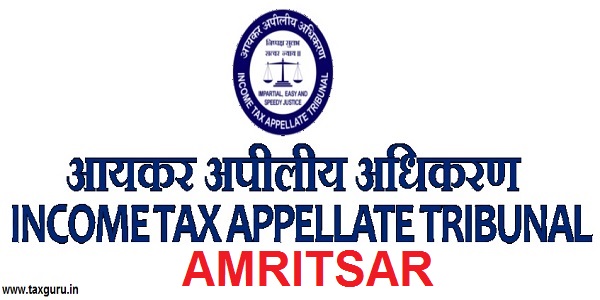
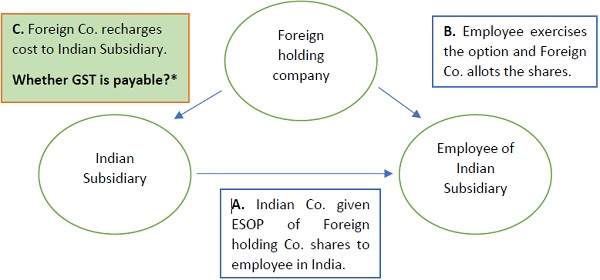
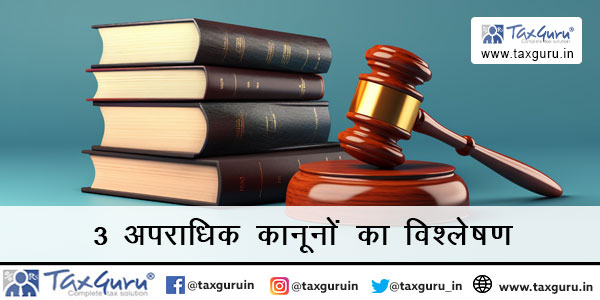







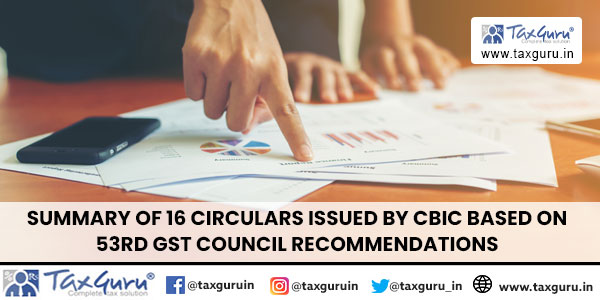

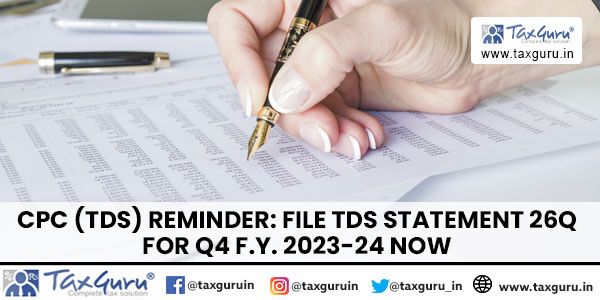

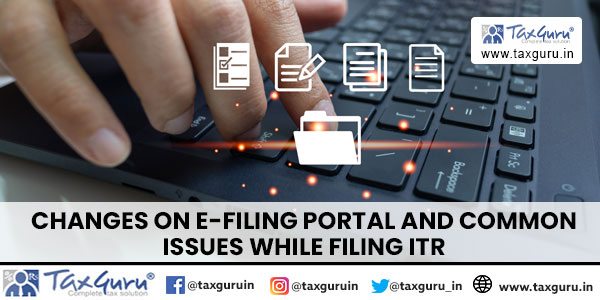
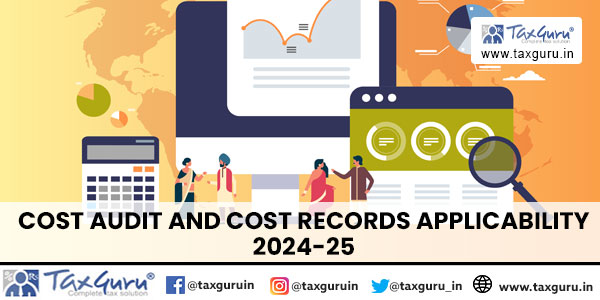
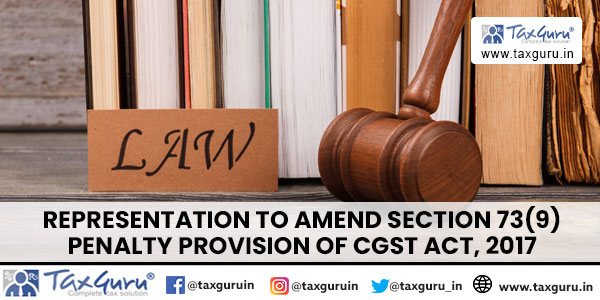



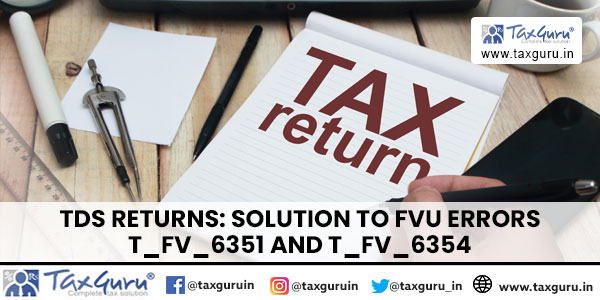
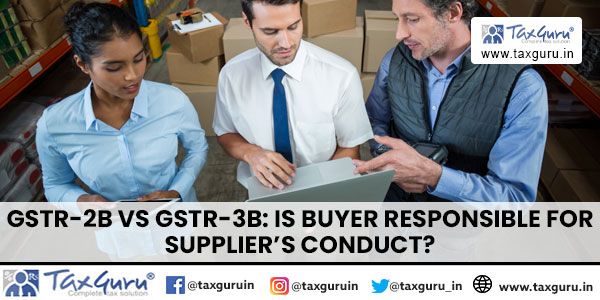



very apprehensive for a lay man in lucid manner
Excellent treatise in normal english. Thank you and keep up the good work